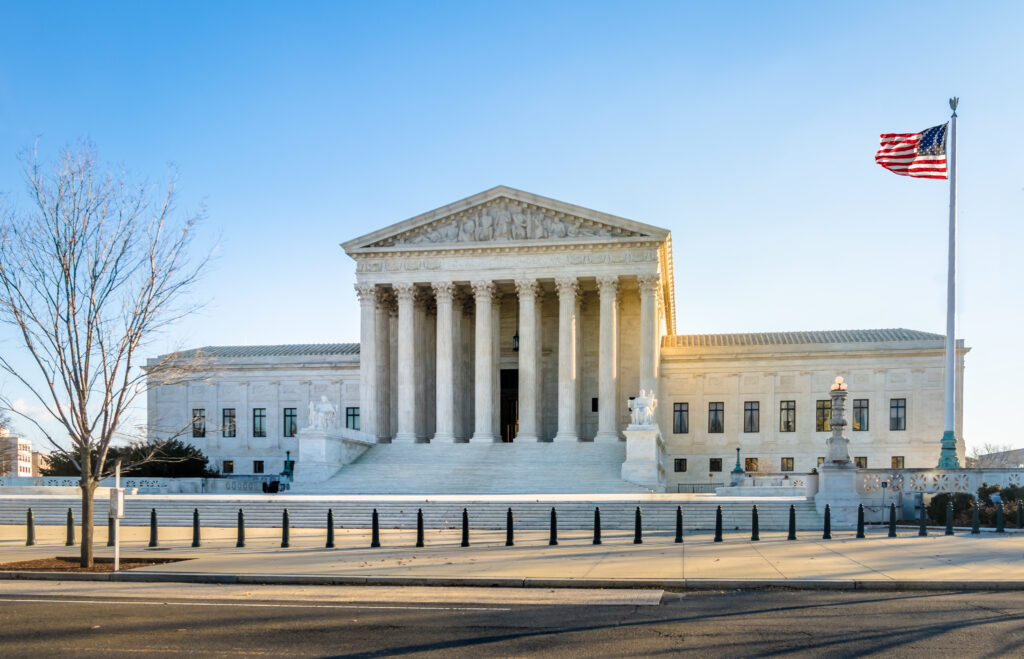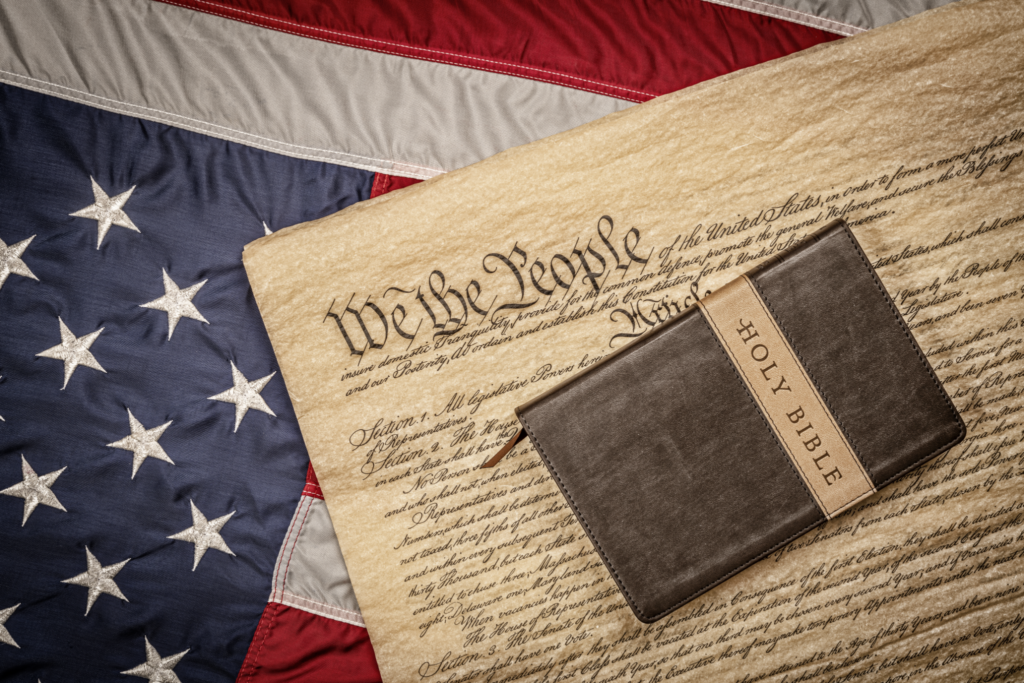Throughout history, religion and its followers have frequently faced oppression from various governments. However, America has been unique in its commitment to safeguarding the rights of its citizens to practice their religion freely. Unfortunately, this situation is undergoing a swift transformation.
The recent increase in violent attacks targeting churches and religious gatherings is deeply concerning. Throughout the country, protesters and rioters have vandalized statues of Jesus, images of the Virgin Mary, and monuments to a Jesuit priest. In both Washington, D.C., and California, churches have been set ablaze, with the attackers citing these houses of worship as “symbols of oppression.” It is distressing to witness a culture that appears to be actively besieging religious freedom, using fire, chains, and other violent means. Furthermore, elected officials have exploited the pandemic as a pretext to threaten the permanent closure of synagogues, prohibit drive-in church services, and forbid singing or chanting in religious gatherings, while simultaneously permitting massive protests with chanting and singing.
The Assault on Religious Freedom: Widespread Nature and Global Impact
A nation that is genuinely devoted to religious freedom would, during times of national crisis, embrace and encourage the essential practice of religion rather than prohibiting it. Data clearly demonstrates the widespread nature of the assault on religious freedom. George Barna, a pollster who conducted a four-year study on the topic, found that many Americans perceive a decline in religious freedom in a nation that prides itself on its First Amendment. Pew Research Center’s findings reveal that Americans share this belief with people around the world, as religious freedom continues to be downgraded globally. The global population increasingly feels that religious freedom is under siege.
Despite facing widespread hostility towards religion and religious freedom, those who remain faithful have celebrated the recent progress made in the courts. However, as attacks on religious freedom continue to rise across the country, court victories alone do not fully alleviate the issue. This is exemplified by the case of Gail Blair, a blind woman who has been prohibited from distributing free copies of the Gospel of John in a public park. While we will do everything in our power to win her case, the escalation of attacks on religious freedom remains a matter of grave concern.
The Importance of Recognizing the Ongoing Assault Against Religious Freedom Despite Legal Victories
There is no doubt that victories in support of religious freedom at the nation’s highest court are essential and gratifying. For instance, in the previous year, my organization, First Liberty Institute, established an important precedent that reduced the impact of a legal doctrine that had been in place for nearly 50 years and had resulted in the removal of numerous monuments, memorials, or displays that depicted religious symbols on public property. While we should be grateful for the critical legal victories that have advanced religious freedom over the past nine years, it is important not to underestimate the gravity of the ongoing assault against it. We have had to defend our “first freedom” in 14 cases before the Supreme Court of the United States in just nine years.
When viewed in the context of legal history, the figures are startling. During the first 110 years of the United States’ existence, the Supreme Court made only three rulings that pertained to religious freedom. However, the court’s stance on religious freedom began in earnest during the 1940s and has escalated significantly in the decades that followed.
The Evolution of Religious Liberty Litigation in the United States: From Rarely Heard to Frequently Litigated
To put it differently, for the first almost century of our republic, the U.S. Supreme Court did not make any rulings concerning the Free Exercise Clause of the First Amendment. Similarly, the court did not hear a case on the Establishment Clause of the First Amendment until 110 years had passed, and then, it did not hear another case pertaining to either clause for another 41 years. However, since 1940, litigation on religious liberty has increased dramatically in almost every area of religious life, including school prayer, legislative prayer, release time education, religious land use, distribution of religious literature, conscientious objection, wearing religious head coverings in military service, the Pledge of Allegiance, religious beard length, and more.
The fundamental freedom of religious liberty has faced a deluge of litigation in our country, with over 75 cases brought since 1940. The figures speak for themselves: while it took 110 years for three Supreme Court cases to arise challenging religious liberty, more than 75 additional cases have been litigated in the 80 years since. Thus, religious freedom has been increasingly under siege for eight decades now.

Consider some of the many cases being litigated in lower courts across the country. Coach Joe Kennedy lost his job after taking a knee in silent prayer after a high school football game. In rural Nebraska, a multi-ethnic church is being physically attacked while seeking to care for its community, including members of the Omaha nation, yet city leaders are refusing to permit the church to build on the town square. Orthodox Jewish synagogues in California have been hit with 10 lawsuits in just five years from animal rights activists, challenging a religious practice dating back at least to the seventh century.
Religious freedom cases overwhelming the legal system
In a country where religious freedom is not under siege, the legal system would not be overwhelmed with cases like that of a former Marine Corps veteran and football coach who lost his job for praying, a Northern Irish pastor serving Native Americans in Nebraska facing opposition, or Orthodox Jewish communities repeatedly facing lawsuits for practicing their religious traditions protected by the First Amendment.
Political lack of commitment to religious freedom reflected in the opposition to RFRA and lack of agreement in the Supreme Court
The need for litigation to protect religious freedom is partly due to the lack of political commitment from leaders. The Religious Freedom Restoration Act (RFRA) is an example of this. Despite its initial widespread support in Congress, it has become a primary target of opposition from one political party. Furthermore, even in the Supreme Court, there is no unanimous agreement that the RFRA protects religious freedom in the marketplace.
The fact that the Burwell v. Hobby Lobby case was decided by just one vote highlights the extent of the attack on religious freedom. But the question remains, if our political leaders were truly committed to protecting religious freedom, why did the case even reach the Supreme Court? And if there were no assault on religious liberty, why have the Little Sisters of the Poor, an order of Catholic nuns, been engaged in legal battles to safeguard their conscience rights since 2013?
Justin Butterfield recently pointed out that government officials are using regulations to suppress religious freedom across the nation. Justice Clarence Thomas’ majority opinion in another Little Sisters of the Poor case is remarkable because it requires government agencies to consider the impact of RFRA and the First Amendment on their regulations or face having those regulations deemed as an arbitrary and capricious exercise of rulemaking power. The fact that such an opinion is necessary speaks volumes about the state of religious freedom in the country.
The enduring principles of the First Amendment in defending religious freedom
Religious freedom may be under threat, but hope is not lost. The First Amendment still stands, and its principles are widely held. Despite the mounting challenges facing religious liberty, its champions remain steadfast against efforts to redefine or eradicate it. During the recent pandemic, we have witnessed what some on the legal, political, and cultural Left consider religious freedom, but which they reduce to mere “right to worship”: stay at home, participate in virtual services, and keep religion out of the public sphere and the workplace, lest you infect others. This approach has rightfully angered many Americans, who recognize that religious freedom is more than that; that one’s obligation to the Divine is not a government grant, and therefore not something that government can rightfully take away.
The Inherent Human Right to Religious Freedom
Instead, religious freedom is an inherent part of our human existence. It is a right that goes beyond merely allowing for religious worship; it is meant to be actively practiced. It is a liberty that extends beyond holding one’s beliefs and conscience but also includes the freedom to express them publicly and live them out without constraint. It is a sacred human right that must be defended and safeguarded by all, including our neighbors, elected officials, and judges. Religious freedom is not given in human history, and it requires active protection against the ongoing siege against it. It is our collective responsibility to uphold and defend it.
In conclusion, religious freedom is not just a constitutional right; it is a fundamental part of our human existence that must be actively practiced and defended. While there are ongoing challenges to this liberty, including political and cultural opposition, hope is not lost. By recognizing the importance of religious freedom and taking action to safeguard it, we can ensure that this sacred human right endures for generations to come.

